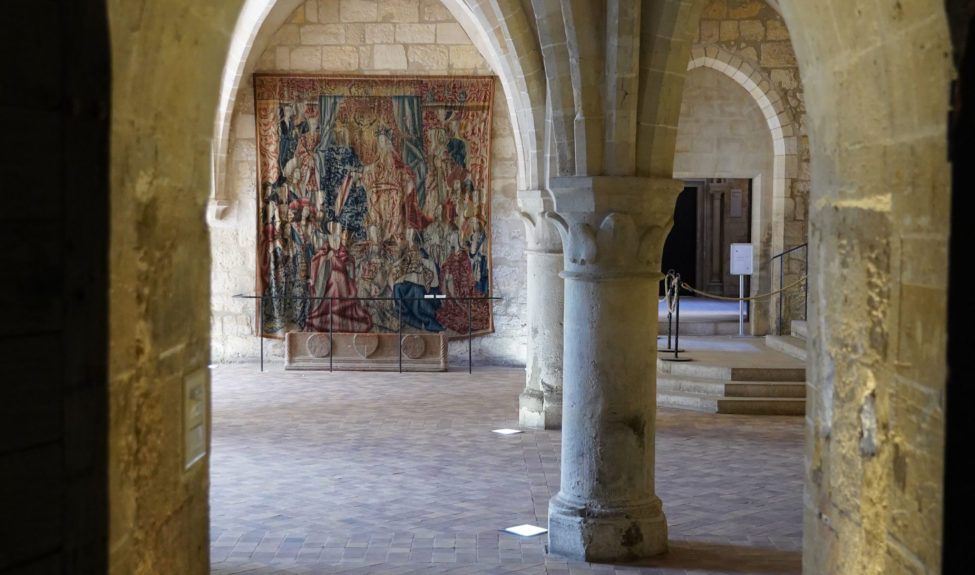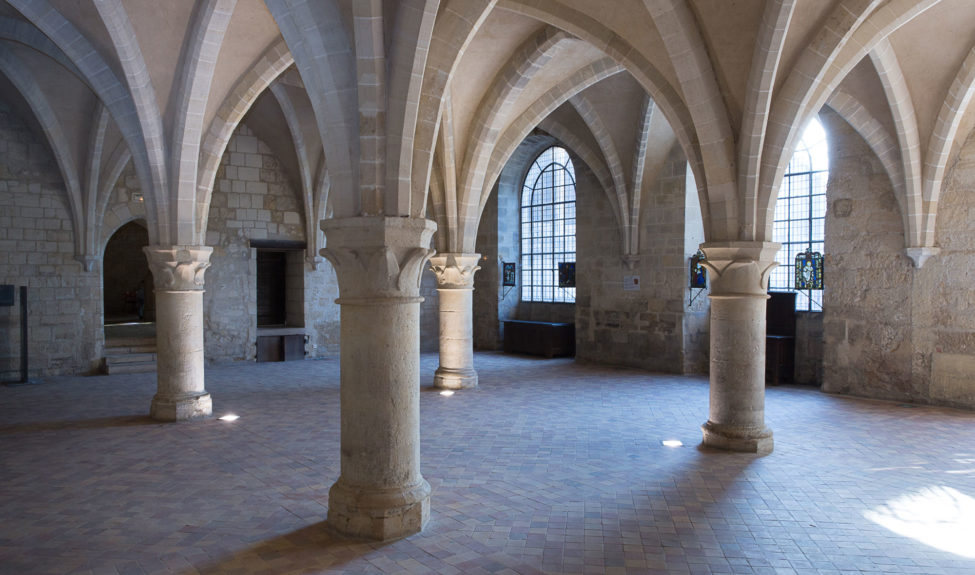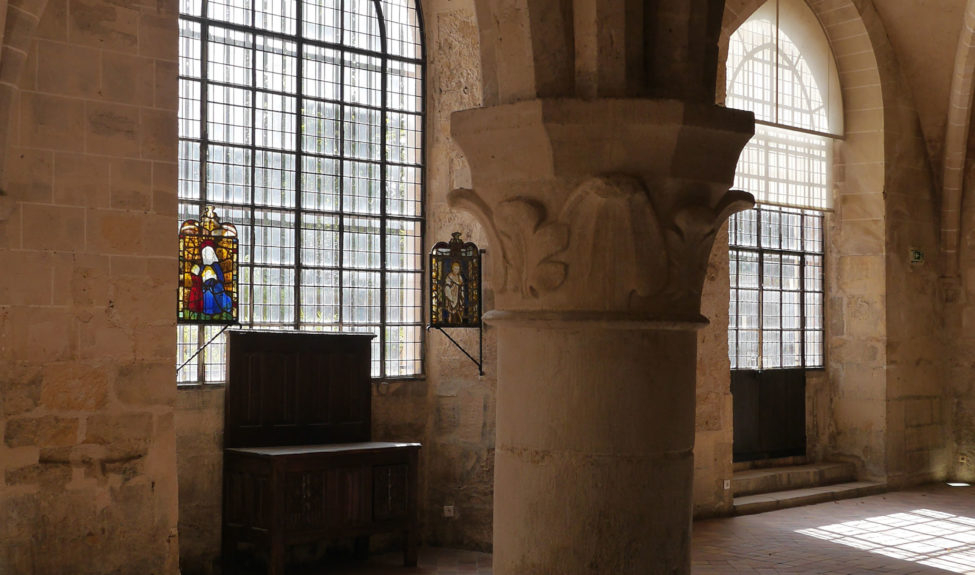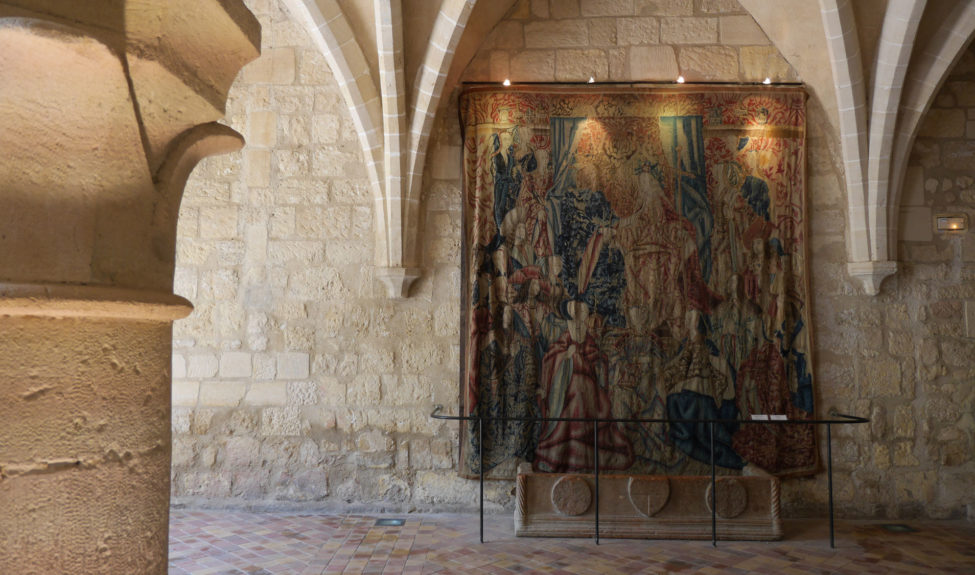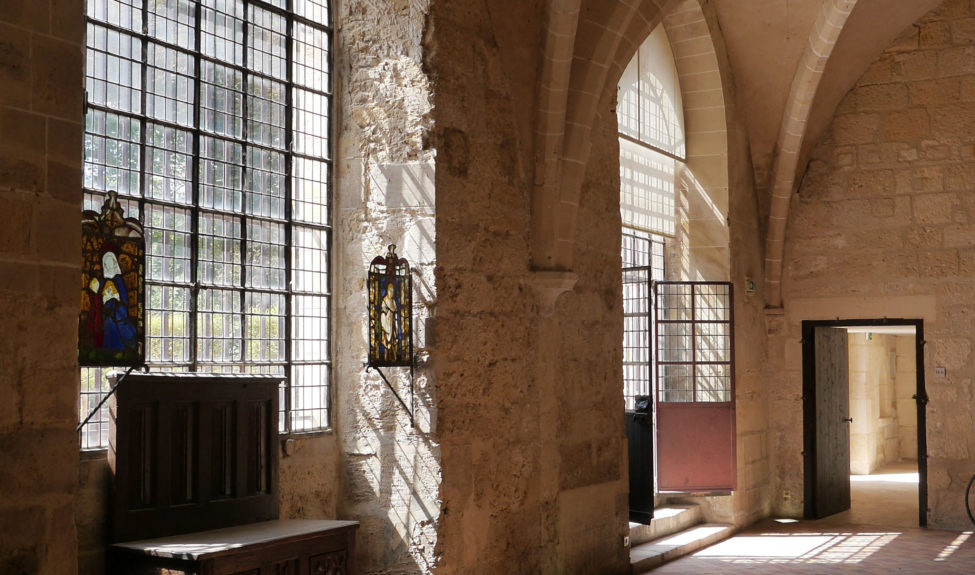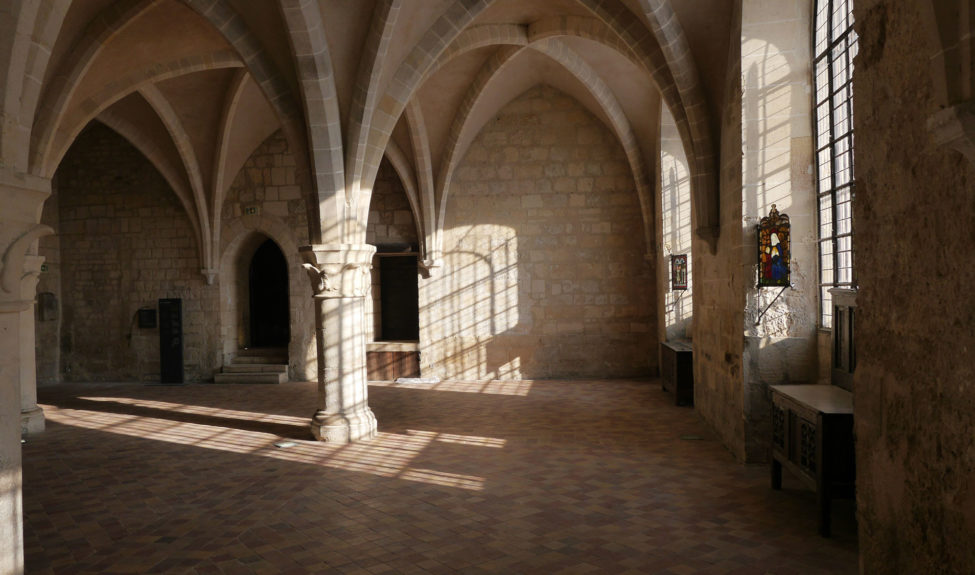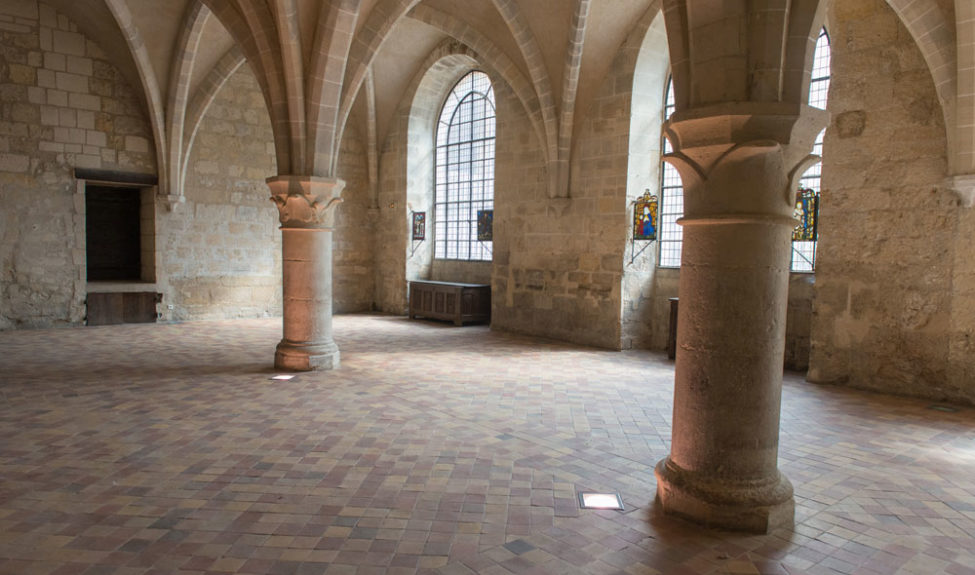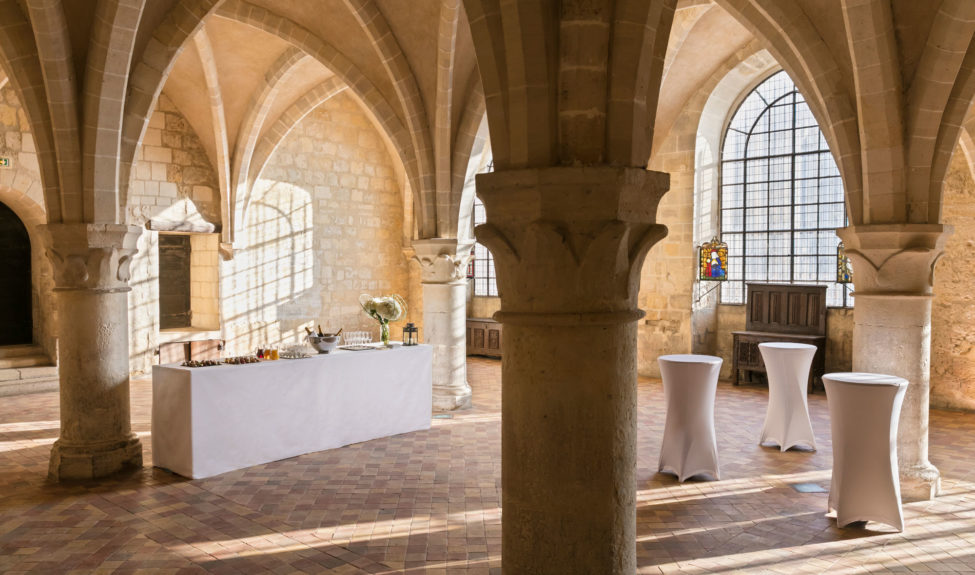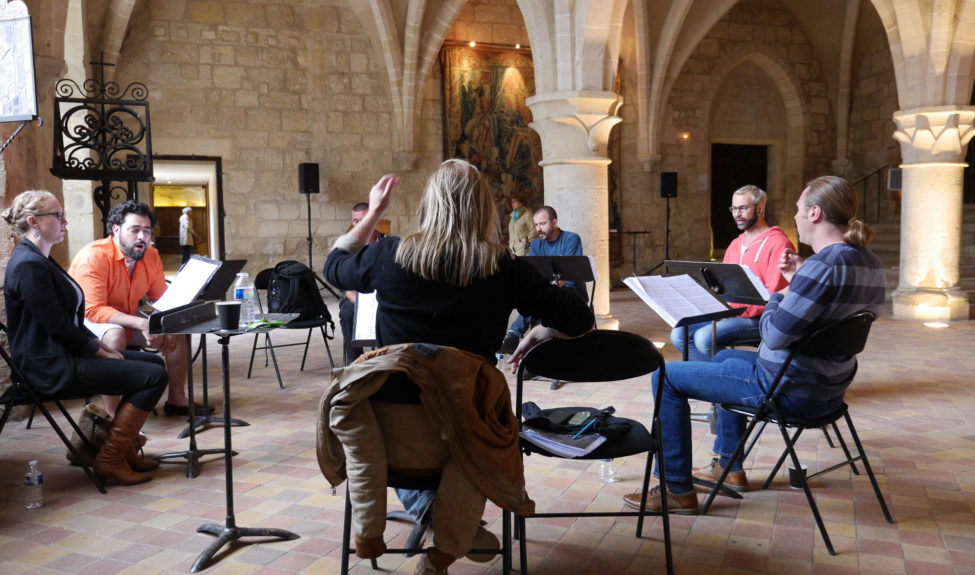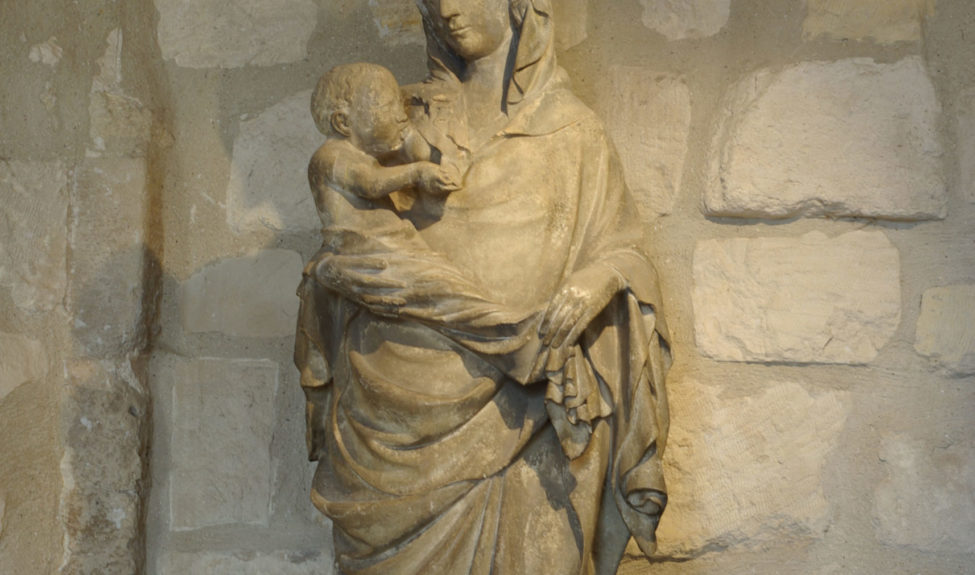The Fruits of the Earth
Located between the monks’ and the lay brothers’ refectories, this space is surprisingly large: but at the time of Saint Louis, it did cater to a significant community.
With four thick columns and visible buttresses corresponding to the cloister vaults, it is evocative of another aspect of the medieval world, more quotidian and as such, perhaps more relatable to our time.
Read more
Housed in the South wing, the kitchen is architecturally very massive and very much in contrast with the elegance of the monks’ former refectory, next door. In particular, the cloister vault buttresses have been left visible, perhaps because of the purely utilitarian status of this space.
The kitchen was remodeled a number of times during the 19th and 20th centuries, and in the process lost its fireplace, of which no trace remains. In the middle ages this fireplace was probably set in the middle of the kitchen, open on all four sides, with columns supporting the masonry mantel.
Monks would come to get their plates of food at a hatch in the wall separating the kitchen from the former refectory. On the North side, a door provided access to the drinking water fountain located in the cloister, whereas to the West another door gave on to the lay brothers’ passageway (the lay brothers were in charge of cooking).
An underground channel connected to the latrine channel collected waste water from the kitchen. A small extension off the South wall housed the cellarer’s pantry. Although no longer there, its trace can be seen on the external façade.
During the years the abbey was converted into a mill, a mezzanine floor was probably built in to the former kitchen, and the space used first for storage and later as a fabric printing workshop. Contemporary documentation describes it as “dark and messy”. In 1865, the vaults were repaired, the windows enlarged, a cooking stove installed and the space was once again used as a kitchen, with a laundry area. It continued to be used as a kitchen during the First World War, to feed the hundreds of wounded accommodated on the premises.
After major restoration work was undertaken in 1937, mainly to remove changes made in the 19th century, in-floor heating and new paving were installed in 2002.
